Books by Oľga Škvareninová
FMK UCM v Trnave, 2019
Vydanie vysokoškolského skripta schválila Edičná rada a vedenie Fakulty masmediálnej komunikácie ... more Vydanie vysokoškolského skripta schválila Edičná rada a vedenie Fakulty masmediálnej komunikácie Univerzity sv. Cyrila a Metoda v Trnave. Za jazykovú stránku publikácie zodpovedá autorka. Vydanie prvé. Všetky práva vyhradené. Toto dielo ani žiadnu jeho časť nemožno reprodukovať bez súhlasu majiteľov práv.
3rd Edition, FMK UCM v Trnave, 2014
Papers by Oľga Škvareninová
ІННОВАЦІЇ ТА ОСОБЛИВОСТІ ФУНКЦІОНУВАННЯ ЗМІ В ДЕМОКРАТИЧНОМУ СУСПІЛЬСТВІ [INNOVATIONS AND FEATURES OF THE FUNCTIONING OF THE MEDIA IN A DEMOCRATIC SOCIETY], 2024
The paper deals with the dress code of news anchors (both anchormen and anchorwomen) of the natio... more The paper deals with the dress code of news anchors (both anchormen and anchorwomen) of the nationwide TV broadcasters in Slovakia: the Slovak state television RTVS and private televisions TV Markíza, TV JOJ and ta3. It also focuses on how the presenter's clothing and colours affect the credibility of the news and the audience's reception of the information.
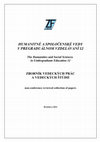
HUMANITNÉ A SPOLOČENSKÉ VEDY V PREGRADUÁLNOM VZDELÁVANÍ 12 , 2024
Politicians' speeches in the media are an important tool for communicating with the general publi... more Politicians' speeches in the media are an important tool for communicating with the general public, influencing public opinion, persuading voters, defending their own positions, discrediting opponents and mobilizing support. They can take different forms: from formal speeches in parliament, at public events and press conferences through ceremonial speeches, informal and occasional speeches to campaign speeches, briefings or speeches during a crisis. In terms of composition, the most common structure is introduction - core - conclusion, or core - conclusion, including the use of rhetorical appeals logos, pathos, ethos and kairos. Speeches often contain justifications and arguments so that people believe the politician and agree with their speech. Speeches of politicians during crisis communication are a complex mixture of informational, emotional and mobilizing elements. To be effective, they must be compositionally balanced and adapted to the changing situation.

EJMAP, 2024
Creating a school magazine offers students opportunities to develop their skills, professional po... more Creating a school magazine offers students opportunities to develop their skills, professional potential, teamwork, creativity, media literacy, and involvement in the school community. In magazine design, colours create a positive first impression, strengthen a magazine's attractiveness and popularity among readers. Combinations of colours form a consistent visual identity and hierarchy, and set the spatial balance. Since colours have an emotional impact, they can affect the mood of the readers or evoke an emotion that corresponds to the article's content. Using a colour palette that matches the identity of the university or the faculty can reinforce brand awareness and help build trust with students and the wider public. Critical to creating a professional university magazine are not only the right background and typeface colours, but also matching colours of imagery that appropriately complement the typography and page layout, including white spaces that reinforce the professional to upscale feel of the magazine design. Effectively selected colours will not only make the magazine a communication vehicle for information, but will also enhance marketing potential and especially aesthetic values.
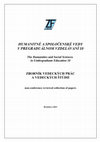
HUMANITNÉ A SPOLOČENSKÉ VEDY V PREGRADUÁLNOM VZDELÁVANÍ 10, 2023
The illusory truth effect is a psychological phenomenon, the basis of which is the tendency of a... more The illusory truth effect is a psychological phenomenon, the basis of which is the tendency of an individual to consider information as true only because it is frequently repeated and because they know it. People also perceive as true those statements that are presented in a clear and comprehensible way, because they have no problems understanding them. Research confirms that even knowledge does not reduce the impact of this effect which works even when a person knows that the statement presented as true is misinformation. Although we encounter the illusory truth effect mainly in mass media, marketing, advertising or political communication, including propaganda and other forms of persuasion, we can also find it in science, where frequently repeated false statements are considered and subsequently cited as true and scientifically plausible. On the basis of examples taken from the field of science, we advise the following eight basic characteristics of the illusory truth effect in science: repetition of false information, information filtering and confirmation of one's own ideas, influence of previous research, simplification of scientific knowledge, knowledge, resistance to correction, infodemic, sharing of scientific knowledge. Nowadays, in times of information overload and extensive dissemination of information through various media channels, this effect emphasizes the importance of critical thinking and verification of scientific facts.
ПРОБЛЕМИ ЖУРНАЛІСТСЬКОЇ ОСВІТИ ТА ПРАКТИКИ: УКРАЇНСЬКИЙ ТА СВІТОВИЙ ДОСВІД [PROBLEMS OF JOURNALISM EDUCATION AND PRACTICE: UKRAINIAN AND INTERNATIONAL EXPERIENCE], 2023
The illusory truth effect is a cognitive bias that can be amplified in the realm of mass media du... more The illusory truth effect is a cognitive bias that can be amplified in the realm of mass media due to the frequent repetition of information and the influence of confirmation bias. It has significant implications in the media context, as it plays a crucial role in shaping public perceptions, opinions, beliefs, and values. In the mass media context, there are eight key aspects of the illusory truth effect to consider. To mitigate its impact, media consumers should cultivate critical thinking skills, diversify their sources of information, and be aware of the potential for manipulation through repeated media information and narratives.
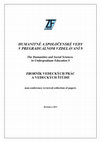
HUMANITNÉ A SPOLOČENSKÉ VEDY V PREGRADUÁLNOM VZDELÁVANÍ 9, 2023
The term body language is narrower in meaning than the term nonverbal communication. Body languag... more The term body language is narrower in meaning than the term nonverbal communication. Body language serves primarily for the external physical expressions of a person's internal emotional states and feelings. It is an important aspect in audiovisual media because it can significantly influence how the audience perceives the information conveyed. In mass media, body language can be conveyed in accordance with standards established as a kind of code of the medium or with rules characteristic for different types of programs. In our paper, we classify body language used in audiovisual media into three categories: based on the way the media constructs body language for the purpose of presentation, we classify it as natural, minimized and exaggerated body language; according to the effects of body language on interactants, including effects on the media audience and on the communication process, we distinguish active and passive body language; based on the semantics of body language, we distinguish between autosemantic and synsemantic body language. The mentioned categories of body language are used in audiovisual media in different intensity of mutual combinations also with a connection to verbal expressions and to the entire communication context.
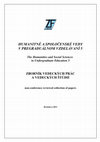
HUMANITNÉ A SPOLOČENSKÉ VEDY V PREGRADUÁLNOM VZDELÁVANÍ 5, 2022
Until now, research on TV news broadcasting has focused mainly on the verbal component of newscas... more Until now, research on TV news broadcasting has focused mainly on the verbal component of newscast, despite the fact that television is an audiovisual medium in which, in addition to verbal expressions, nonverbal expressions are also important. The Code of Ethics and ethical standards in broadcasting require anchors and news reporters to present the news in a neutral manner, regardless of their personal beliefs and emotions, which are expressed primarily through body language. Previous research suggests that television news anchors and reporters can influence media audiences through their nonverbal communication, and that credibility also operates on a nonverbal level. In our paper, we focus on the nonverbal expressions of news reporters of Slovak Radio and Television, and investigate to what extent professionally trained news reporters are also professionals in their nonverbal expressions during live broadcasts without post-production editing.
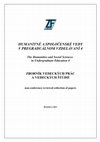
HUMANITNÉ A SPOLOČENSKÉ VEDY V PREGRADUÁLNOM VZDELÁVANÍ 4 , 2021
Colorics deals with colors, their influence on people, communication and social interaction. Know... more Colorics deals with colors, their influence on people, communication and social interaction. Knowledge from this interdisciplinary field is used in several areas, including mass media communication. When using color cues in the media, the importance of color, its use, combinations, communication channels, target audience, media message, etc. must be taken into account. Despite existing research, not all color effects on media audience have been thoroughly researched. The literature does not present a consistent view of the influence of color cues in the media; the results of some researchers are even contradictory due to psychological setting of recipients or culturally conditioned models. In the creation of media brand color, and in the use of colors in mass communication, the visual, psychological and symbolic (culturally conditioned) effects of color cues on the media audience are observed. Compared to these three effects, the physiological effect of color cues on media public is the least important.

ŠTÝL - KOMUNIKÁCIA - KULTÚRA, 2021
The so far carried out investigations of the language of the mass media in Slovakia – including t... more The so far carried out investigations of the language of the mass media in Slovakia – including the publicistic style – has been mostly oriented upon the analysis of media texts/communication units including feedback; media oriented linguistics broadens these aspects by investigating the processes of the birth of the linguistic product (content) and its impact upon media-oriented education and upon developing critical media-oriented literacy. An irreplaceable position within media linguistics in our cultural environment is also held by the publicistic style which can be the starting point the media-oriented linguistics of which can stem from and draw impulses from also in the era of digital media. The contemporary situation and tendencies broaden the orientation of media linguistics by the technical, semiotic and pragmatic aspect which deepen the approach also to publicistic style. The paper also indicates the super-temporality of the works by J. Mistrík’s, who in his work followed the changing society, as well as the reaction of language and functional styles to these changes.
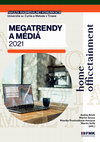
MEGATRENDY A MÉDIÁ 2021: HOME OFFICETAINMENT
Due to the COVID-19 pandemic, the number of videoconferencing meetings in Slovakia has also incre... more Due to the COVID-19 pandemic, the number of videoconferencing meetings in Slovakia has also increased since March 2020, enabling people to work safely from home and helping pupils or students to continue their education. In online teaching, various platforms have begun to be used; they have become an essential tool for both teaching and learning, and an essential part of the limited social interaction between teachers and students. The paper is based on the premise that nonverbal communication is relevant in face-to-face class and in online education as well. We also focus on those aspects of non-verbal behavior that are not identical to non-verbal means during teaching in person and on those that contribute to the effectiveness of online teaching. Based on the research of J. N. Bailenson, we also identify those factors that cause non-verbal overload during online education.
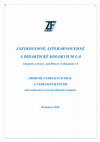
JAZYKOVEDNÉ, LITERÁRNOVEDNÉ A DIDAKTICKÉ KOLOKVIUM L-8, 2020
Media image is a relatively permanent element that conveys information about the mediamediated re... more Media image is a relatively permanent element that conveys information about the mediamediated reality. It is a presentation of a subject or a product that is easily perceived by the media audience. Media image creates reputation of people, companies or organizations that present themselves in the mass media, it forms a kind of media self-portrait of the subject, its media brand. During the first wave of the coronavirus pandemic, which became a central topic of the Slovak and foreign media at the beginning of 2020, the media image of the Slovak Republic was also created. Qualitative analyzes of articles from the print media, television newscast and special broadcasts point to the predominantly positive image of Slovakia in the domestic and foreign media. This thesis is also confirmed by the results of a survey in which 185 university students participated; more than two thirds of them rated the media image of Slovakia as positive or rather positive. Fast and strict security measures, compliance with COVID-19 measures by the majority of the population, relatively low number of infections and the lowest number of deaths in COVID-19 per capita contributed to Slovakia's positive media image and made Slovakia an example to other countries. On the other hand, shortcomings in state material reserves, government cases, exposed corruption of government officials, low number of testers compared to other countries, lack of tests, face masks, protective equipment for first-line people contributed to Slovakia's negative media image during the first wave of the coronavirus pandemic. Although Slovakia became a positive example of a successful fight against this disease in the foreign media at the beginning of the COVID-19 pandemic, the Slovak Republic still does not have a clear profile, a clear media or marketing brand and did not benefit from the positive media image from the beginning of the pandemic.

ZF LINGUA: JAZYKOVEDNÉ, LITERÁRNOVEDNÉ A DIDAKTICKÉ KOLOKVIUM L-7, 2020
The study deals with changes in the lexicon of Slovak language during coronavirus pandemic, which... more The study deals with changes in the lexicon of Slovak language during coronavirus pandemic, which began to spread in Slovakia on March 6, 2020, when the Public Health Authority of the Slovak Republic confirmed the first case of infection in a 52-year-old man from Bratislava region. Journalists, anchors, editors, politicians and public figures responded to the pandemic situation with media statements in which the use of familiar words increased, which took on a new word-resonance in changed conditions. There were also more technical terms in the media, which until then were used only in the language of professionals. The changed situation also affected communication of the general public - whether in internet discussions or on social networks, people created new playful and cheerful words or combinations of words in response to the situation or as a way of some control over it. Many of these words helped people cope with these difficult circumstances. In a few weeks, we acquired and actively began to use new vocabulary associated with coronavirus. All examples of coronal lexis presented in this study are from mass-media. They are divided into six thematic areas: medical environment, struggle and war, cooperation, work and education, social contacts and relaxation of restrictions, creative language games; the words COVID-19 and coronavirus, which are initial terms, have a special position in our division.
СОВРЕМЕННЫЙ ДИСКУРС-АНАЛИЗ, 2020
At present, media become important linguistic institutions that decisively determine language dev... more At present, media become important linguistic institutions that decisively determine language development. Tendencies with synergistic effect on contemporary Slovak language in mass media include primarily changes, e. g., socio-economic changes in society after 1989, globalization, digitalization; and specific linguistic changes, e. g., inter-style and inter-genre hybridization, linguistic unification, tendencies to informal conversationalization, vernacularization, weakening of codification and stylistic norm. In Slovakia, even in the recent past, the cultivation of media language was mostly identified only with standardized varieties of language usage, but today some Slovak linguists think also about communicatively understood language cultivation.
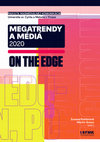
MEGATRENDY A MÉDIÁ 2020: ON THE EDGE, 2020
The author of the term and concept of verbal hygiene, sociolinguist D. Cameron, defines it as a s... more The author of the term and concept of verbal hygiene, sociolinguist D. Cameron, defines it as a set of practices by which people try to purify their language of grammatically incorrect expressions and aggressive, derogatory or vulgar connotations. Verbal hygiene is closely related primarily to linguistics and sociolinguistics, but also to the theory of language ideologies, language management and critical discourse analysis; in context of mass media communication also with concepts of media studies. At the basic level, it describes any deliberate attempts to change language and consciously interfere with its development. Specific research areas of verbal hygiene include the issue of linguistic (un)intentional discrimination on the basis of gender, age, disability, ethnic origin, religion, sexual orientation, etc., the related “purifying” media expressions of stereotypes, discriminatory or offensive connotations, and the replacement of such language by euphemistic, gender-sensitive and politically correct statements, which is also applied in mass-media communication.
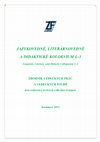
ZF LINGUA: JAZYKOVEDNÉ, LITERÁRNOVEDNÉ A DIDAKTICKÉ KOLOKVIUM L-3 , 2019
English is now called the Lingua Franca of Internet; however, its dominance is often referred to ... more English is now called the Lingua Franca of Internet; however, its dominance is often referred to as “linguistic imperialism”. Some scientists therefore want to use international auxiliary language instead of global English. One of the new planned languages is called Europanto, which is a mix of simple words and grammar from all the official languages of the European Union that can be understood by an average educated person. Its creator, an Italian Diego Marani, claims that Europanto accepts the dominance of English in international communication, but at the same time it accelerates the process of “internationalization” of the language. Nearly 80 percent of our survey participants can imagine using Europanto in written communication in the online digital media world. The problem seems to be the pronunciation of some words in Europanto.

Media Literacy and Academic Research, 2018
The study focuses on the three main types of the image of PR manager - self-image, perceived imag... more The study focuses on the three main types of the image of PR manager - self-image, perceived image and professional image. Its purpose is to identify all the image attributes needed for a position of PR manager. In the theoretical part, image is defined as the combination of both external and internal reflections of an individual, object or company creating values and awareness. The research part is the application of theoretical principles in the practical operations of three PR managers from the insurance sector and four PR managers from the bank sector. Research is in the form of an 8-question structured interview and qualitative response analyses. The result of the issue is an empirical assessment of the gathered information, studied literature and research. In self-image description the managers describe themselves as creative, systematic, reliable, extrovert, social with excellent communication skills. The perceived image of PR managers requires responsibility, friendliness, helpfulness, politeness and empathy. The professional image of PR managers requires a professional dress code, responsibility, creativity, excellent communication skills, openness to new ideas and experiences. Primary analytical and organizational attributes are considered as an advantage in the profession of PR manager as well.
Kvalita jazykového vzdelávania na univerzitách v Európe VII, 2018
Štúdia sa zaoberá výrazmi s prefixoidom euro, ktoré slovenský jazyk začal preberať z médií od pol... more Štúdia sa zaoberá výrazmi s prefixoidom euro, ktoré slovenský jazyk začal preberať z médií od polovice 90. rokov 20. storočia. Ich masívny príliv sa zaznamenal krátko pred vstupom a po vstupe Slovenskej republiky do Európskej únie. Prefixoid euro poukazuje predovšetkým na skutočnosť spájajúcu sa s európskou integráciou, Európskou úniou alebo spoluprácou medzi jej členskými štátmi. V súčasnosti nachádzame v slovenskom mediálnom priestore aj eurovýrazy ohraničené regionálne na územie Slovenska alebo slová, ktoré pôsobia humorne až šokujúco.











Uploads
Books by Oľga Škvareninová
Papers by Oľga Škvareninová